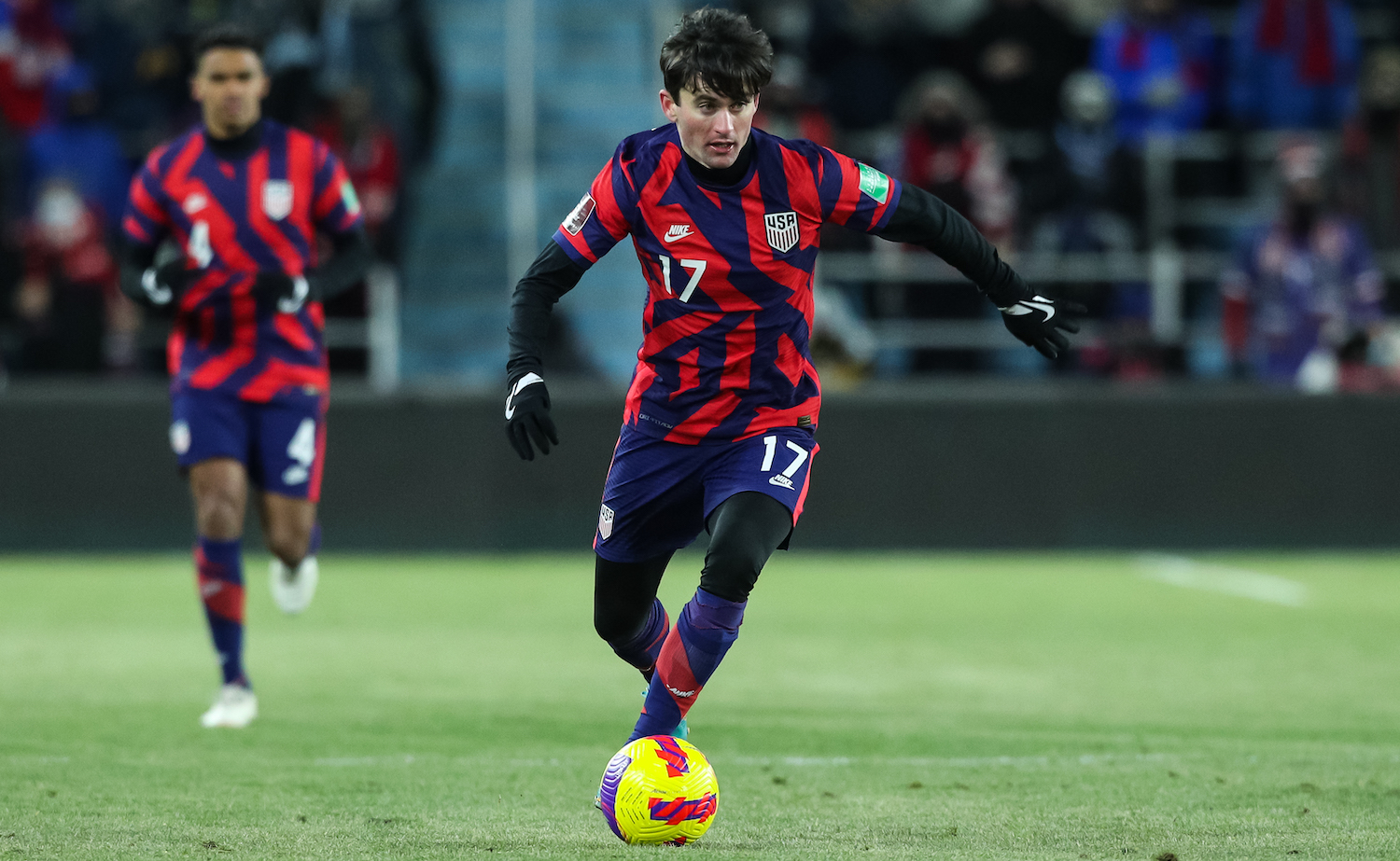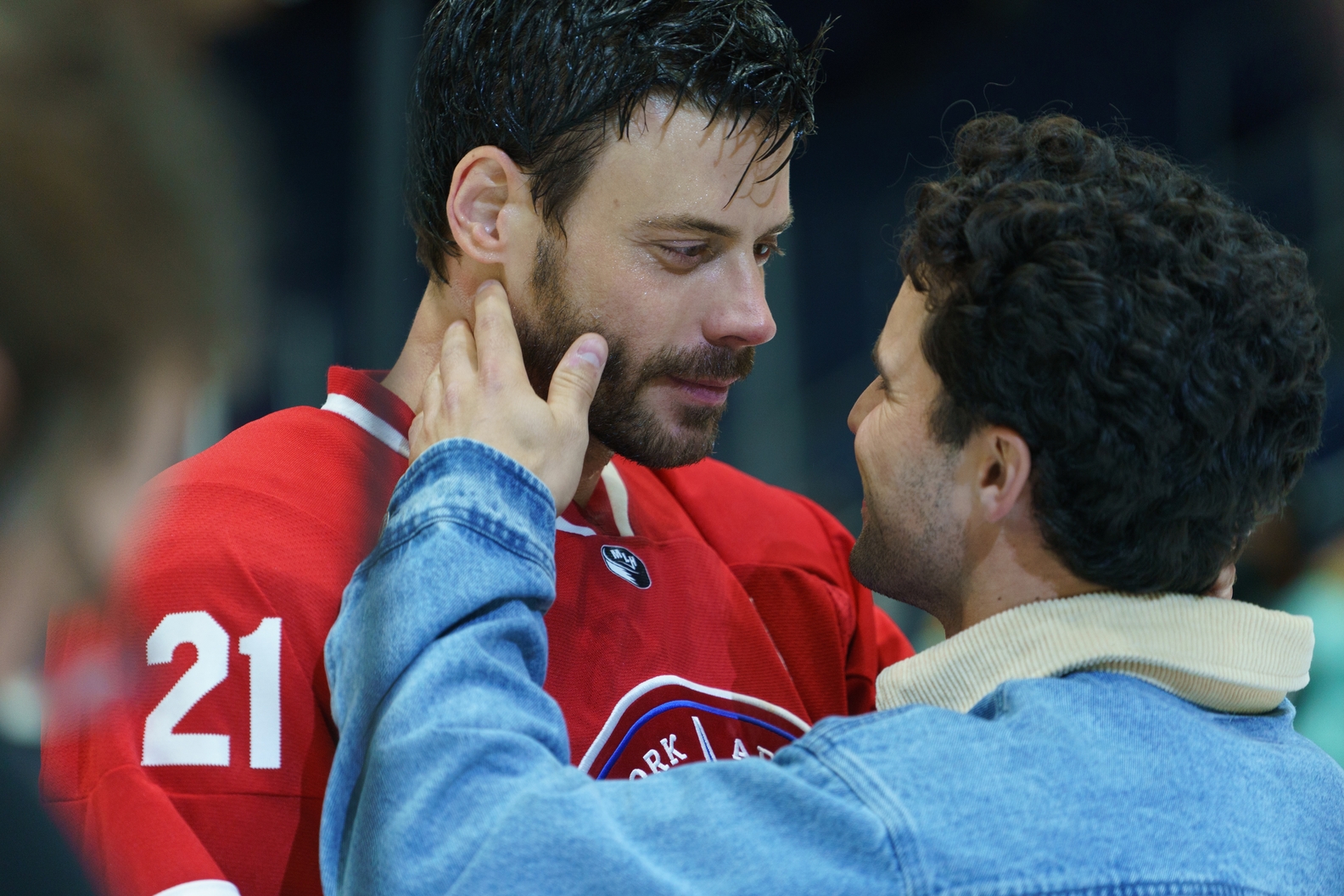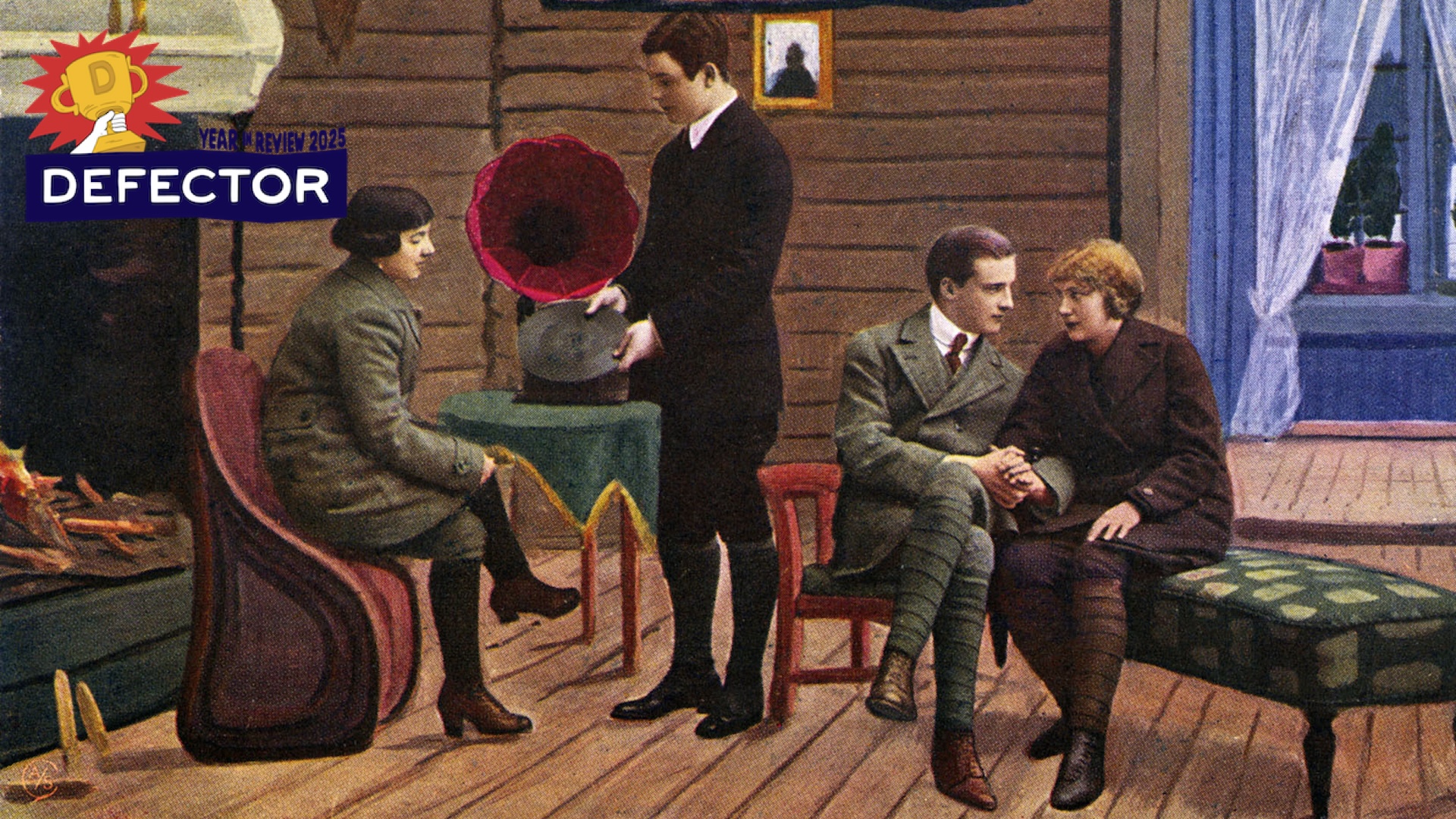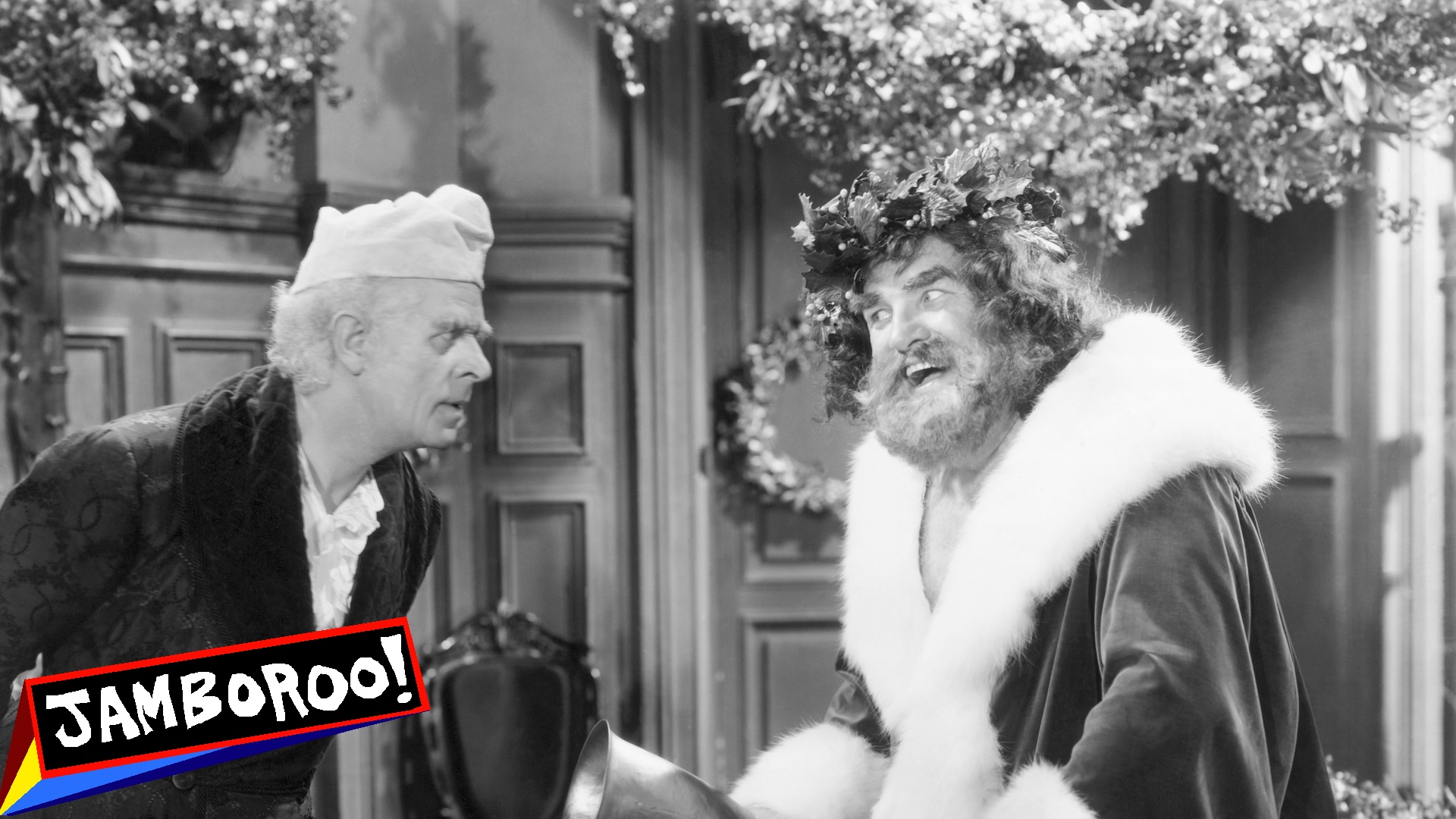Welcome to What Is This USMNT Guy’s Deal, a regular series in which Defector selects a name from the myriad number of exciting young American soccer men playing in Europe and answers the question: What is this USMNT guy’s deal?
As the United States men's national team rounds the corner into its final trio of World Cup qualifying games, the squad faces a problem: a lot of guys are hurt. The problem is not simply the number of guys hurt; it's also the identity of the hurt guys who will not be able to make the away trips to Mexico and Costa Rica nor the home game against Panama. Starting keeper Matt Turner is probably out with a somewhat mysterious foot injury; his co-number one Zack Steffen is also likely to miss this slate of qualifiers; Gio Reyna re-injured his hamstring in his first start back for Dortmund recently, though he still might try to play; most concerning of all, Weston McKennie is going to be out for a while after twisting his ankle in the Champions League last week.
The situation isn't totally dire. The USMNT has already gotten to the brink of qualification almost completely without Reyna, and Ethan Horvath is a fine backup keeper. The big miss, however, will be McKennie, who has been the team's best player throughout qualifying. What will the team do for these decisive upcoming matches without him?
Gregg Berhalter got his answer during the Honduras game: play Luca de la Torre.
Who Does He Play For?
De la Torre plays for Heracles Almelo, a mid-table Eredivisie side. He made the move over to the Netherlands in 2020 after seven years with Fulham, whose academy he was able to join when he was 15 thanks to him having a Spanish passport. Aside from a notable showing at the 2017 U-20 World Cup, de la Torre was a mostly forgotten man for both club and country. He made a total of 14 first-team appearances for Fulham over the years, and despite some nice showings like his one-goal, two-assist performance against Millwall in the League Cup, de la Torre never earned the coaching staff's trust. It seemed like a move back to the States was on the cards, but de la Torre earned another shot in Europe with Heracles, who brought him in as a free agent.
Once he arrived, his new coach Frank Wormuth made a critical change that would immediately turbocharge de la Torre's career. Rather than keep him out on the wing where he played for Fulham, Wormuth moved him to central midfield. Though he needed to work on his defensive chops, de la Torre proved himself a very gifted ball-carrier from the middle of the park. Wormuth relied on him heavily, playing him in 32 league games in his first season with Heracles. His playing time and form got him a spot back on the USMNT shortly after, though de la Torre turned down a Gold Cup invitation to go through a full preseason with Heracles. His club commitment paid off. He's cemented himself as one of Heracles's best players this season, and has been included in all but one USMNT World Cup qualifying roster this cycle. His start against Honduras was his first start for the national team, and he played very well.
The Weston McKennie Mamma Mia Test
The Weston McKennie Mamma Mia Test refers to the following foolproof heuristic for determining whether or not a U.S. player is actually good or just good by our rosy American standards: Do fans tweet lovingly about them in their local language?
Maar even hé.... hoe goed is die De la Torre wel niet? Ongelofelijk genoten van hem gisteren (en van Rente ook trouwens).
— Bjorn Wind (@HAFCBJ) February 12, 2022
Beste speler van de club uit de laatste 16,5 seizoenen Eredivisie?
How Does He Play?
De la Torre is one of the more reliable midfielders in the Netherlands. He's covered the second-most ground in the league this season, and his passing stats point to a bright, creative player who steadily drives his team forward. De la Torre is not a physical player really at all, and he struggles as a defensive fire-putter-outer because most players can bully him. I think it's useful to think of him as Gianluca Busio with a different skill tree. Both players occupy the same spaces, struggle defensively, and are chiefly responsible for progressing the ball upfield. Where Busio is all about hitting beautiful passes from a less advanced position, de la Torre loves to run with the ball, dribble past guys, and strain the defense with his forward passing. His running stats are impressive, though the rest of his offensive skillset grades out nicely as well. He's among the most successful dribblers in the league and he's completed the most passes in the opponent's half out of all players who don't play for big-three teams. You would like to see more goals and assists out of him, though Heracles doesn't have much offensive firepower to work with.
Lead attacker Rai Vloet has been suspended since January for his involvement in a fatal drunk-driving incident, the team's best winger Ismail Azzaoui tore his ACL in December, and Heracles's leading scorer from the 2020-21 season, Delano Burgzorg, left for Mainz in January after not playing for the first half of the season. The team has had plenty of issues, which has helped de la Torre's steadying presence gain more and more influence.
Wonderteen Index
The Wonderteen Index is a holistic, objective metric that analyzes a player’s full array of skills and talents, distilling it all into a single number that corresponds to their ultimate potential and the likelihood that they will assume the title of Wonderteen.
De la Torre is about to turn 24, he plays in a small league, and doesn't score many goals, so a score of 18 out of 31 feels right.
As with Busio, the biggest thing holding de la Torre back is his weakness as a defender. I'm sure bigger clubs in better leagues are tracking him after all the good he's done for Heracles this season, though those bigger clubs have probably seen that he's 5-foot-10 and less than 150 pounds. That is not big enough to cut it in the Champions League without Tyler Adams-level physicality, so while LdlT is probably in line for a move to a bigger club at some point, his ceiling is likely capped. However, his skills on the ball, quick passing acumen, and experience within a counter-pressing scheme definitely make him desirable.
Can He Play Right Back?
The U.S.’s European corps is absolutely silly with right backs, enough to stock a full XI. And so it is important to determine whether or not the USMNT guy of the week can play the position.
De la Torre is right-footed, which is a good asset when you're playing right back, which he can do since he's also good at running.
Show To Me A Cool Highlight
How Does He Fit In With The U.S. Team?
As his performance against Honduras showed, pretty seamlessly. Berhalter wants his midfielders to move the ball quickly and decisively with their passing and running, and while de la Torre isn't the physical presence or goal hawk that McKennie is, he'll fit in great as a space-eater in the midfield. He's a clean stylistic fit in front of Adams and Yunus Musah (who, by the way, has been playing well for Valencia lately) in the midfield, as they can provide cover for him and give him good outlets for his passing. I wouldn't be surprised if he leads the team in touches in one of the three upcoming games.
How Close Is He To The Hypothetical Best XI?
Right now, he's in it. Without McKennie, de la Torre gives the USMNT their only replacement who can play in a ground-covering midfield trio without forcing Adams and Musah to compromise their game. He only has five caps, but he will need to come up big while earning his next three. The USMNT has a four-point lead over Panama and a five-point lead over Costa Rica for fourth and fifth, respectively. Finishing fourth wouldn't be the end of the world, though this team would like to qualify automatically and start looking ahead to Qatar rather than risk a repeat of the 2017 disasterclass against Trinidad & Tobago. Beating Mexico in the Azteca would be a legendary result, though, realistically, the team knows that the Panama game is their best bet to pick up the next three crucial points. Thankfully, Christian Pulisic is in his best form of the year, and while McKennie's absence will hurt, de la Torre seems ready to do his thing in the midfield.







